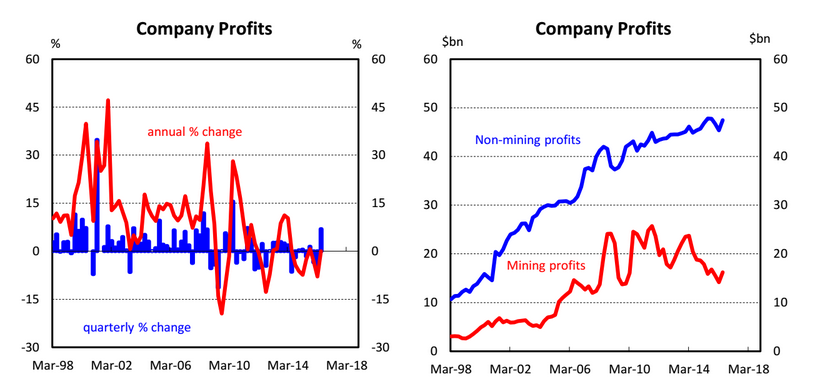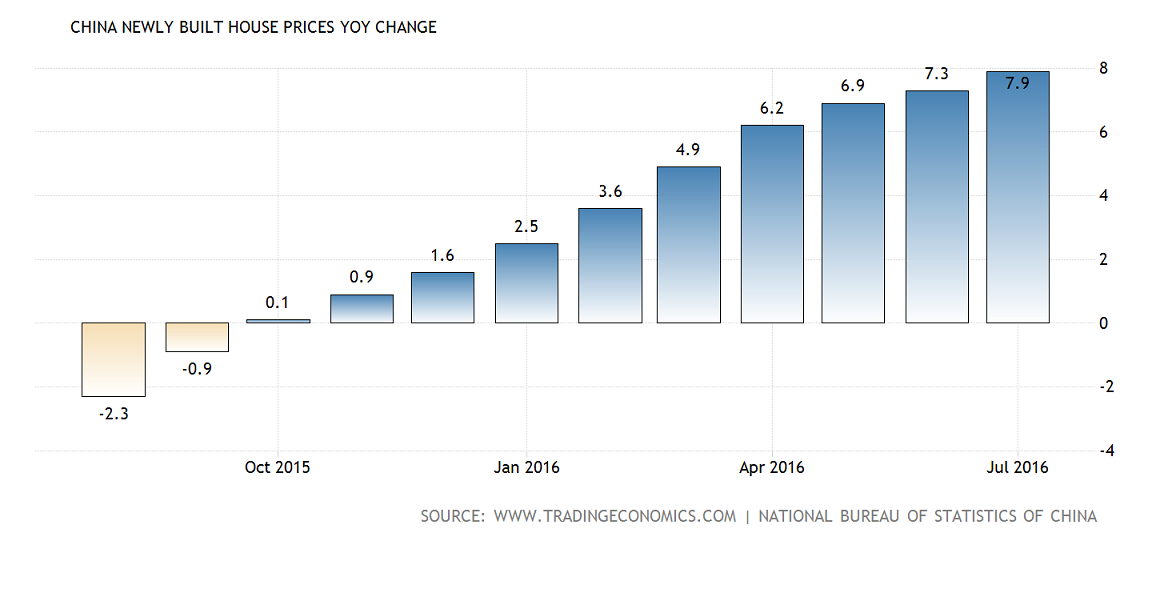Pound up Against Australian Dollar as GDP Data Comes in Below Par and RBA Tipped to Cut Rates Again

The Australian Dollar has given back some of the gains it made following the decision by the RBA to leave interest rates unchanged with an underwhelming GDP reading the likely culprit.
The Australian Dollar has given back some of the recent gains it made against the British Pound and US Dollar as Australian GDP for the second quarter of 2016 reads at 0.5% - below the 0.6% reading markets had expected.
Add to this the general risk-off theme across global markets and we can understand with the Aussie is a little under the weather.
Indeed, the GDP data was actually quite good when one digs deeper:
- Government spending has certainly surprised on the upside, up 2.4% in underlying terms
- The recovery in the non-mining economy continued, although did lose some momentum in Q2
- The terms of trade rose by 2.3% in Q2, and adding to income growth for the first time in approximately three years
- Labour productivity measures were generally stronger in the quarter, with GDP per hour worked rising by 1.2% q/q and market productivity at 1.5%
“Today’s figures are somewhat stronger than anticipated by the RBA in August and continue to suggest reasonable growth across the non-mining economy, despite some modest loss of momentum,” says Alan Oster at NAB.
Oster believes the influence these figures have on the outlook for the economy and monetary policy will depend on whether the support to growth from government spending continues.
The Pound to Australian Dollar exchange rate trades at 1.7505; more or less where it has been since the start of September.
Retail rates are seen between 1.7015 and 1.6892 at major banks while independent providers are quoting between 1.7347 and 1.7225.
The Australian Dollar to US Dollar exchange rate trades at 0.7658 with banks offering between 0.7444 and 0.7390 while independents are quoting between 0.7589 and 0.7536.
RBA Holds Tight
The Australian Dollar traded with a firm tone in the first half of the week after the RBA opted to leave interest rates unchanged while also opting to provide little by way of forward guidance.
Inflation is low and the RBA expects it to remain low for sometime while it sees the Aussie economy continuing to recover despite falling mining investment.
The currency remains an important part of the RBA’s interest rate decision process with the Bank again warning today that, "an appreciating exchange rate could complicate the necessary economic adjustments".
But, More Rate Cuts Likely
The outlook for AUD rests on two main pillars we believe: The Chinese economic trajectory and whether further interest rate cuts will be delivered by the RBA.
And on the latter, we hear that more cuts are indeed likely.
Commenting on the RBA's latest policy event, ANZ Research's Felicity Emmett says she continues to think that the RBA retains an easing bias.
"Although there was little guidance in today’s statement, we think that the RBA retains an easing bias given its forecasts have underlying inflation remaining well below the 2.5% midpoint of the target band for an extended period. As well, we think the Bank would be concerned by the sustained fall in inflation expectations," says Emmett.
NAB agree that further cuts are coming.
“We do not expect any near-term shift in monetary policy, but retain our view that two cuts will follow in mid-2017 in response to the ongoing weak inflation and risk that the economy slows too sharply in 2018 as the dwelling construction cycle ends and LNG exports flatten off,” says NAB’s Alan Oster.
Should these analysts be correct, and the RBA does cut rates again, expect upside potential in the AUD complex to be limited.
It's Complicated
The release of weak data in August had put an RBA cut back on the table again.
A fall in both Retail Sales and Capital Investment sent alarm bells ringing.
The problem is that for the RBA and watchers of the Australian Dollar the signals are mixed and we've seen just as much improvement as deterioration in Australia's economy.
Manufacturing and trade activity improved and most importantly, iron ore prices have found a bottom.
When we take into account Australian data out on Monday the 5th September we can understand the RBA's decision as it was surprisingly positive.
Gross Company Operating Profits rose by 6.9% in the June quarter, easily beating the 2.0% rise expected.
The surge also reflected a staggering 14.2% rise in mining profits on the back of the recent rebound in commodity prices.
Even non-mining sectors performed well, with a 4.2% rise.
“The rebound in profits is an encouraging sign for the rebalancing towards non-mining sectors of the economy. Business surveys continue to point to above-average conditions and suggest that profit growth should continue for non-mining sectors. That said, we do not expect profit growth to be sustained at such a solid pace in the quarters ahead,” say St George Economics in their response to the data.

“After mining, the strongest contributions to profit growth were in manufacturing, which grew 22.6% in the quarter. This was partially offset by a 27.6% decline in construction profits,” add St George.
St George also noted a 0.8% rise in wages and salaries - the highest increase in four quarters.
“The solid growth in incomes poses upside risks to our GDP forecast of 0.2% in the June quarter, and 3.0% in the year. We will receive government spending and net exports tomorrow, before finalising our GDP forecast for Wednesday.”
Given the recent positive economic data it now seems highly likely the RBA will not go ahead and cut rates, which would be a positive for the Aussie dollar which could well extend its recent gains against both the USD and GBP.
Chinese Economy Will be Key
Analysts believe activity in China will be a key determinant in the RBA’s decision-making.
Indeed, the Aussie dollar firmed at the start of the week after the release of positive China New House Price data which showed a 7.9% rise in August, dispelling myths that the property market was in a down-turn.

The reason the data was significant for the Aussie, is that it shows continued demand for Australian raw materials for the Chinese building industry.
China Caixin Services PMI, though less dependent on Australian commodities, also showed an above expectations rise in August, providing a further positive barometer for the economy.
We will continue observing investment data and iron and coal inventories out of China over coming weeks to get a feel as to where the economy is going as this will be important to the Aussie Dollar's outlook.









